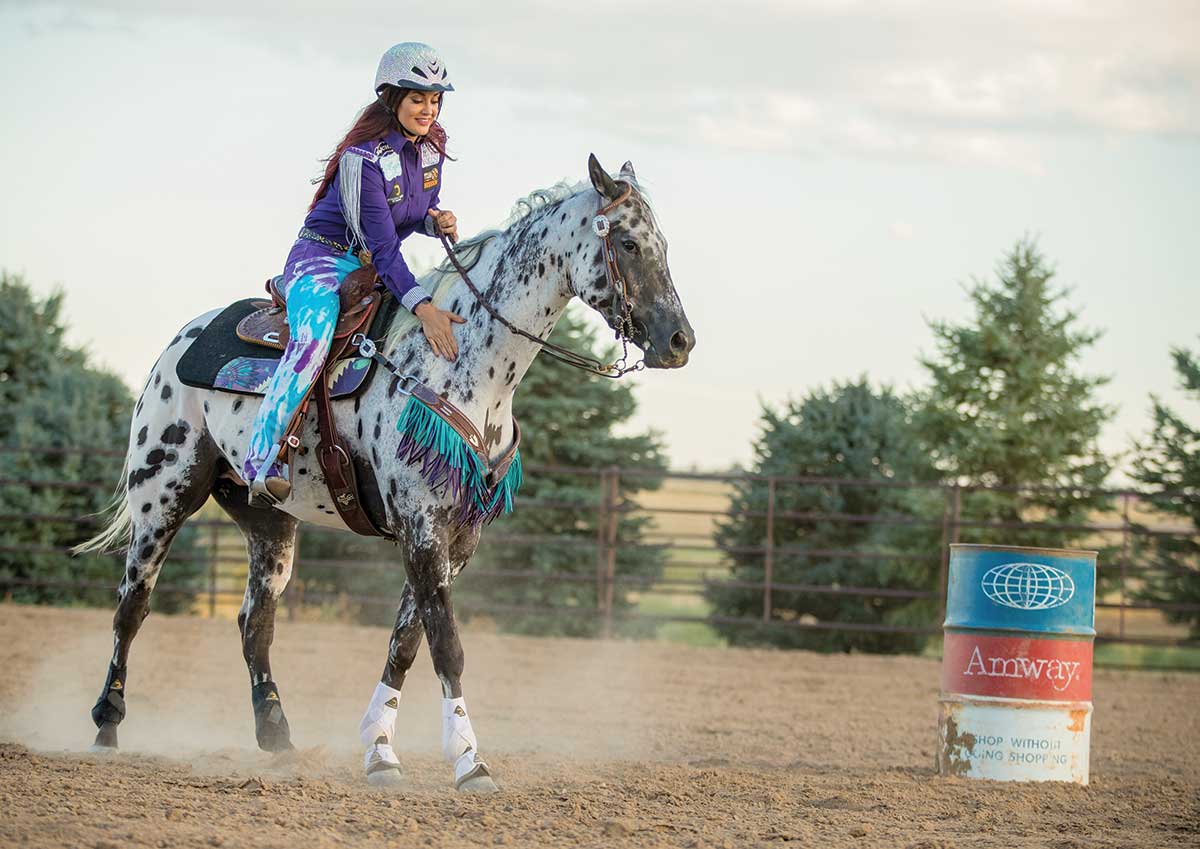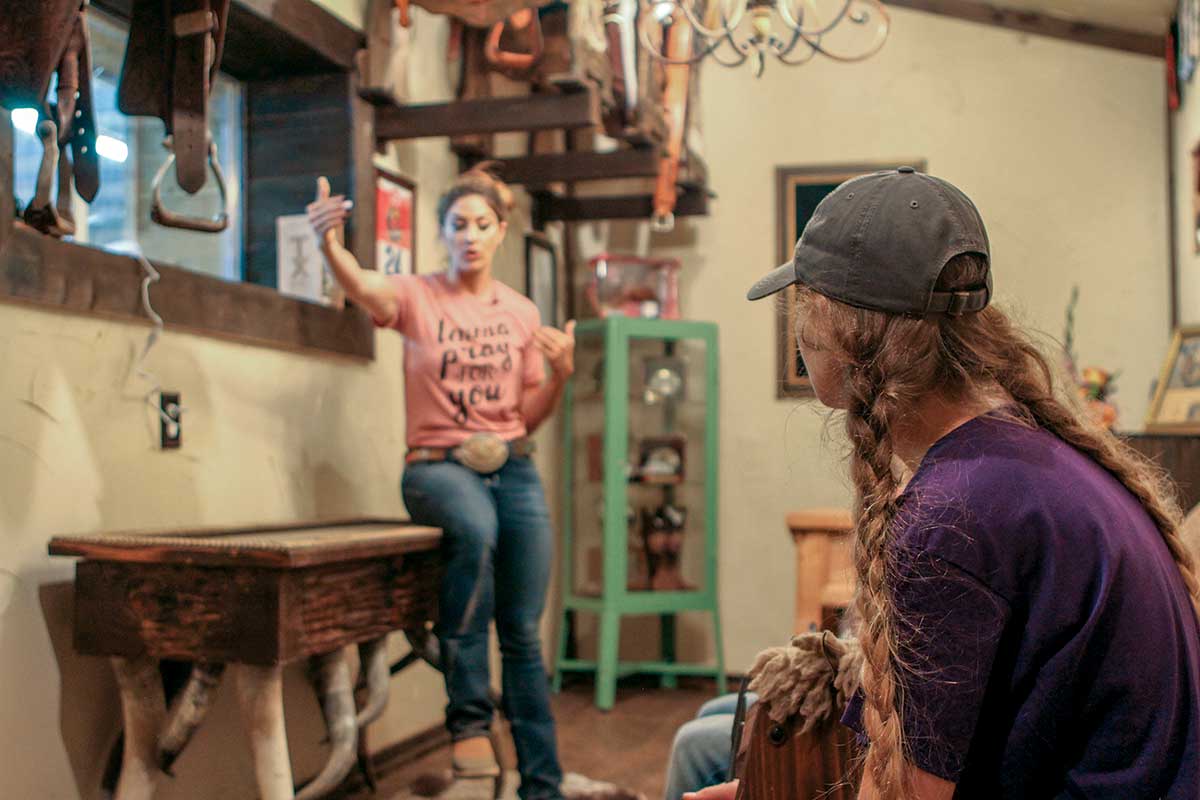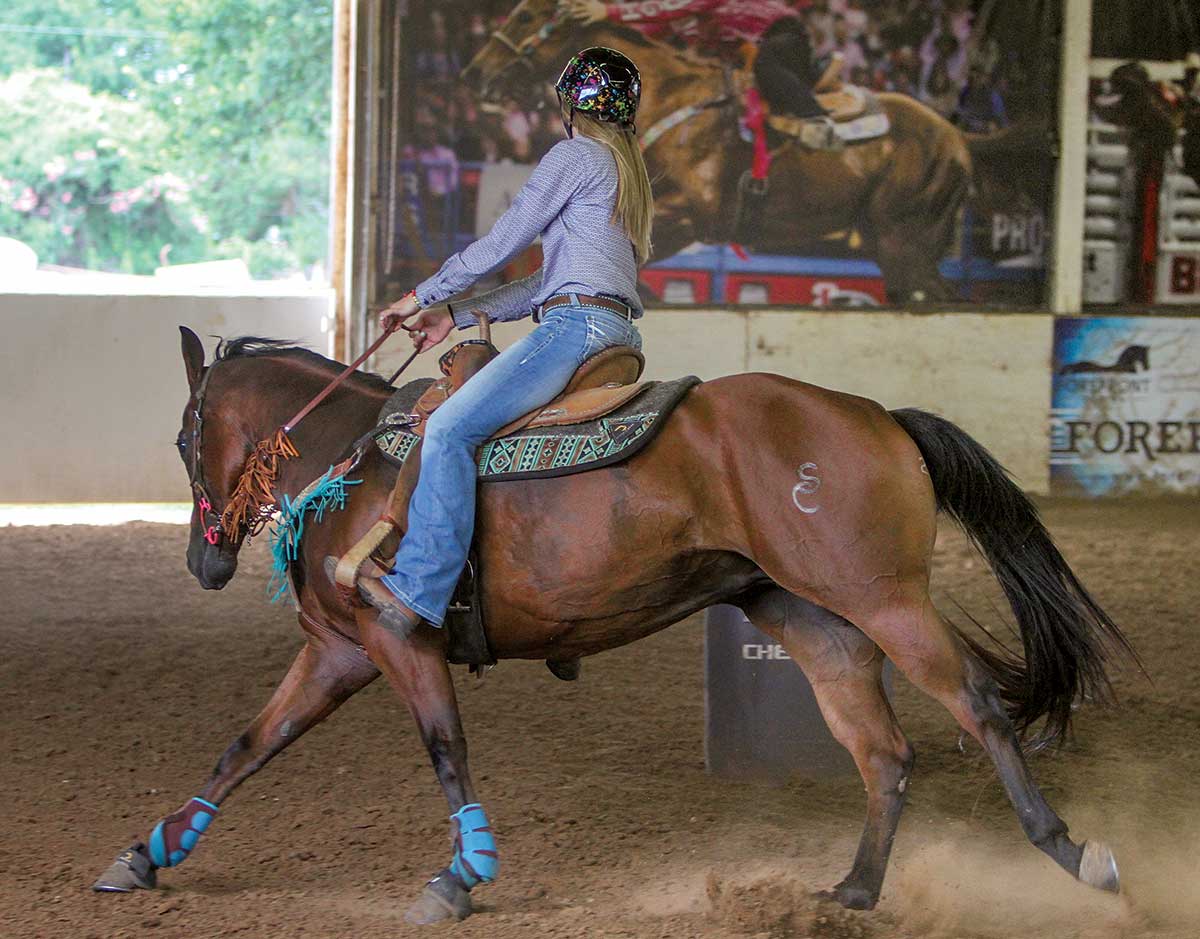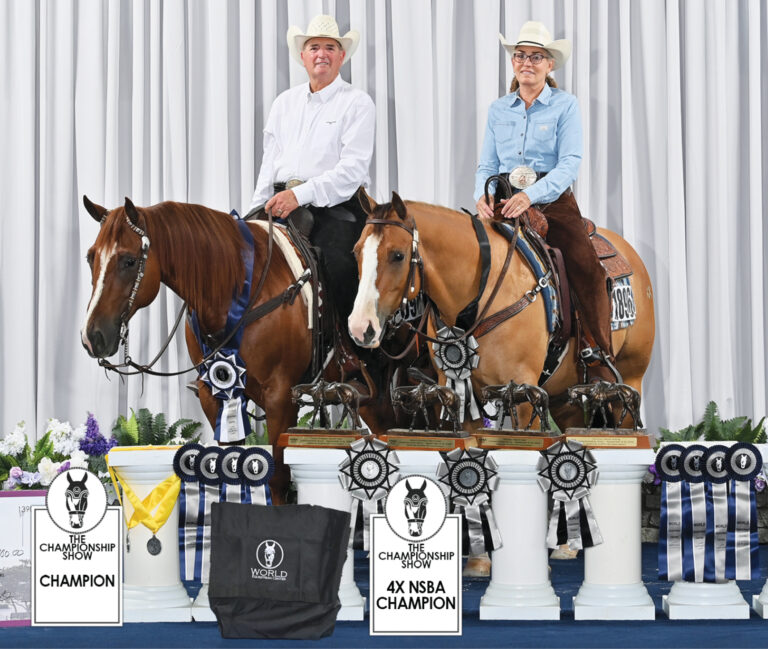
Regardless of your chosen discipline, you’ve probably aimed to achieve a certain riding goal. It could be beating your last time when you run barrels or qualifying for your first championship horse show. Or maybe you’re looking to improve your riding skill so you can hit expert-level trails with your friends. The easiest way to become a better horseman and accomplish something is by setting a realistic goal for you and your horse to work toward.
Here I talk about several things you can do at home—and at the barn—to improve your riding and help you accomplish the goals you set out to achieve. And it doesn’t have to stop in the saddle; use this information to work toward goals outside riding, as well. Choose to follow this advice by yourself, or recruit a friend or family member for extra encouragement and motivation.
Set Your Goals
Before your next trip to the barn, sit down and come up with an idea of what you want to work toward when you’re out there. It can be anything from mastering a flying lead change to eventually competing at a national level.
Once you know what your overall riding goal is, write it down in a journal. When you write something down, you’re 42-percent more likely to accomplish your goal versus someone who doesn’t write anything down. This helps your brain filter out distractions and keeps you focused on what you’re trying to achieve. Include the four following items in your written goal.
Milestones. Building milestones to achieve along the path to your goal keeps you hungry. It can take months—sometimes years—to accomplish a riding objective; without milestones along the way, it’s easy to become discouraged and give up on what you want to achieve. For example, if your goal is to win a professional-level barrel race, there are a few things you’ll have to accomplish before you get there. Milestones might include receiving your permit, earning your pro card, and eventually placing at a professional rodeo. Celebrate every milestone you cross when you’re working toward an overall objective.
As you build in your milestones, remember when you reach a certain level of skill, you start back at the bottom and must work your way up again. If you’re winning a novice-division class and move up to the amateur division, you’ll start back at the bottom and work your way up to the point of eventually winning an amateur event. The closer you get to your goal, the more challenging it gets; stay motivated and focused on what you want to achieve when you’re working your way back up to the next milestone.

Five-year plan. Where do you see yourself in five years? This can include goals that aren’t directly in line with riding, but will help aid you in your riding career. If you plan to graduate from college in five years, you’ll want to find a job that helps you afford all of the expenses that come with owning a horse.
After you’ve created your five-year plan, work backward and create a two-year plan, followed by one-year, one-month, and one-week plans. This helps determine what it takes each day to become the person you want to be in five years. It also allows you to physically see on paper what you need to do to stay on track each week and build your goals and milestones around your plan.
TAKE CARE OF YOURSELF
While it’s easier said than done, one of the most important ways to further your riding career and reach your goals is by taking care of yourself. It’s easy to put all of your focus on your horse and forget about yourself along the way, but your fitness and health is just as important as your horse’s, and riding is a sport that requires both mental and physical strength.
No matter what type of riding you do, you must be strong. For example, if you notice you have trouble holding your midsection still while you’re riding, it’s probably because your core is weaker than other parts of your body. To strengthen that area, incorporate a few core exercises into your daily routine that you can do at home or at a gym.
Track your daily fitness routine in your journal, just as you track your progress toward your riding goals. This helps you see what you’re doing to strengthen your body and how it’s helping your riding. As you continue to build your physical strength, you’ll notice how much stronger you are when you go to guide your horse through different maneuvers.
To-do list. Be more productive with your time by keeping a weekly to-do list of all the things that must be completed. You’ve probably used some kind of to-do list in your life, whether it’s at work or at home, so why not incorporate it into something that’ll help with your riding? When you’re working on your list each week, think of all the things that need to be finished at the barn and at home; this can include cleaning your tack room, or paying monthly bills.
If you’re faced with a task you don’t look forward to doing, tackle that job first and cross it off the list. Rather than dreading the task, work on it immediately and allow yourself to free up the rest of your week and be productive with other responsibilities you look forward to doing.
As you think about what needs to be included in your list each week, incorporate at least one item that’s directly in line with your goal. If your goal is to go to a championship event, your to-do list will include researching and entering horse shows you must attend to qualify for that championship competition, for example.

Reevaluate. At the end of each week, take time to reevaluate your goals. Ask yourself what you accomplished this week that’s relevant to your objective. What did you do that could affect how long it takes you to accomplish a goal? What do you need to change for the next week? What do you need to do the same or more of? If you don’t reevaluate your goals, your brain naturally wants to wander, rather than stay focused on the task at hand.
You can reevaluate your accomplishments and goals by yourself, or meet with a barn friend or family member to share your ideas on how you plan to accomplish your objective.
Track Your Progress
The only way to know if you and your horse are improving is by tracking your progress. Aim to be one-percent better each time you step in the saddle. Progress comes in baby steps, so don’t overestimate what you can accomplish in one riding session.
If you try to master every part of your riding in one practice, you’ll eventually get frustrated and beat yourself down. It can also cause new riding problems that’ll push you back further from reaching your goal. If you improve by one percent every day that you ride, you’ll be 100-percent better in 100 days. Here are my three expert tips for precise progress tracking.

Log your rides. When you ride by yourself, log your daily rides in the same journal you keep your goal sheet in. Include what you did at the barn each day; if you run speed events, track what your times were when you ran a pattern; write down any improvements you had on a certain maneuver, or any problems you faced. Writing things down in a journal lets you track progress each day and gives you guidelines to reassess your goals so you continue to have a purpose when you’re riding your horse.
Video yourself. Have a barn friend or family member video you with your phone. Sometimes it’s easier to see your progress—or mistakes—when you watch yourself on video. Timestamp important parts of your ride so you can easily view the clips and compare them with older videos. You can also invest in a Bluetooth camera with a tripod that can be set up in the arena to follow you around as you ride. Store all of your videos in one spot that you can easily access for reevaluation.
ONE LUCKY WINNERSydney Cameron, winner of the Cactus Gear Win-a-Day Clinic, and her friend Jill, won a one-on-one clinic at Fallon Taylor’s ranch in Collinsville, Texas.
When Sydney arrived at the ranch, she was greeted with flowers and hugs by the entire Fallon Taylor squad, and had a smile on her face from start to finish. Before tacking up one of Fallon’s personal mounts to ride, Fallon discussed the importance of proper-fitting gear, and asked Sydney what she’d like to accomplish during her personalized clinic.
By the last run of the day, the entire group was cheering Sydney on as she accomplished her goal of getting around the first barrel clean, and afterward excitedly shared how she was looking forward to applying her new knowledge toward her own horse.
After the horses were cooled off, the girls sat down to talk with Fallon about keeping journals and tracking their progress so they can accomplish their personal goals of one day becoming professional barrel racers, like Fallon herself.
Work with a professional. We all have bad habits, and sometimes it’s hard to know what your bad habits are when you’re riding by yourself. The easiest way to progress in your riding is by working with someone who’s considered a professional in your discipline.
If you have a mentor or coach come in and explain to you what your and your horse’s weaknesses are, you’re going to progress a little faster than if you’re riding around in the arena by yourself trying to guess what you’re doing wrong.
Your pro consultant can help with something as simple as choosing the right equipment for your horse. But, more importantly, if you’re struggling with a maneuver or you’ve hit a plateau, you’ll have someone there to help guide you in the right direction, reducing frustration between you and your horse.
Many trainers and professionals offer clinics year-round, so if you prefer to keep your horse at home, or can’t afford to have your horse at a trainer’s barn full-time, take advantage of riding in a clinic to learn more about what a trainer recommends you do to hit your next milestone. You might make a few new riding friends along the way who can help you on your path to success.
Success Comes in Numbers
Any time you feel discouraged, remember that success comes in numbers. That means the more you do something, the more likely you are to reach your goal or master something.
If you show your horse, it might take over a year of going to horse shows and competing before you win your first event. The more you compete with your horse, the more comfortable you both become when you’re in the arena. When you’re comfortable in the arena, you’re probably riding your horse the way you do at home. As you become more comfortable in the arena, the closer you’ll get to winning your first class.
It takes blood, sweat, and tears, and thousands of hours spent in the arena before you reach your riding objective. Don’t underestimate what you can accomplish when you spend hours of your time practicing with your horse each week.
Fallon Taylor, Collinsville, Texas, is a world champion barrel racer who provides insightful and motivational clinics around the country. She’s active on all social-media platforms and offers riding and physical-fitness advice and insight to her fans on a regular basis. Visit fallontaylor.com or barrelracingcollege.com to learn more about her.






